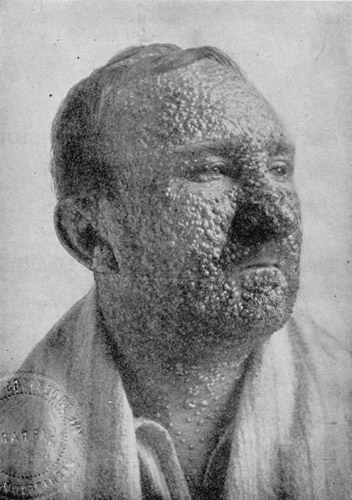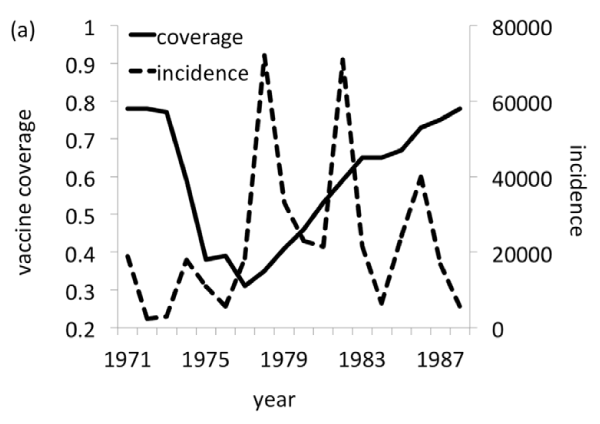Vaccine Scares
Today, let's talk about vaccine scares. The University of Houston Mathematics Department presents this program about the machines that make our civilization run, and the people whose ingenuity created them.
The last outbreak of smallpox in Europe occurred in 1972. A pilgrim brought the disease from the Middle East to former Yugoslavia, where it spread with incredible speed. Authorities swiftly declared martial law to contain the outbreak. These extreme measures were effective, but the disease still claimed 35 lives. My parents still speak of the episode with palpable fear.

A smallpox patient from the U.S. in 1912. Credit: Wikipedia
Smallpox was one of the major causes of death in Europe in the 18th and 19th century, killing about 400,000 people each year. However, widespread vaccination has eradicated the disease worldwide, and there have been no known cases in more than 30 years.
Polio has been close to eradication for years. The disease has disappeared in the Western World, and there are efforts to eradicate it globally. But these efforts are hindered by resistance to vaccination.
Vaccine scares are not limited to developing countries. In 1974 a report in Britain suggested that the diphtheria, pertussis and tetanus vaccine caused brain damage in a small number of children. The vaccine was found to be safe, but within 3 years vaccine coverage dropped precipitously. Several major outbreaks of whooping cough followed, hundreds of thousands were infected and dozens died of the disease. Today, resistance to vaccination is partly responsible for recent outbreaks of whooping cough in California, Colorado and Washington State.
By all accounts seeing a child with whooping cough is terrible. The cough can be so violent that it breaks ribs. So, why do vaccine scares recur?
A recent mathematical model offers some insight. Here is how it works: In the absence of direct experience with a disease our estimate of its danger is diminished. On the other hand, the perceived perils of vaccination can be quite frightening. Although risks are small, no vaccine is completely safe. During vaccine scares, the risks, some true and most invented and unsubstantiated, come into focus. Through social exchanges, the perceived dangers of vaccines can be magnified and can appear to outweigh a vaccine's benefits.
When this occurs, vaccine coverage decreases. But at first unvaccinated individuals are few, and enjoy "herd immunity" - they are protected from the disease by those around them that have been vaccinated. Therefore, the cost of the decision not to vaccinate appears small initially. However, as vaccination coverage decreases, herd immunity breaks down, and outbreaks follow. After these outbreaks take their toll vaccination coverage is re-established.

Whole cell pertussis vaccine coverage (solid line) and pertussis case notifications (dashed line), England & Wales 1971' 1988.
Unlike our great-grandparents, we do not know multiple families that have lost their youngest to childhood diseases. Paradoxically, this has diminished our appreciation for the medical advances that have made it so much more likely that our children will survive to adulthood.
This is Kre'o Josić at the University of Houston where we are interested in the way inventive minds work.
Here is an article giving an overview of the vaccine scare in Nigeria. It appears that a single speech in this case set of a serious public health crisis https://www.ncbi.nlm.nih.gov/pmc/articles/PMC1831725/
The model of Chris Bauch and Samit Bhattacharyya is described here http://www.ploscompbiol.org/article/info%3Adoi%2F10.1371%2Fjournal.pcbi.1002452
Measles provide a good example of a childhood disease that nearly all children used to get at some point before their 15th birthday. Although most recovered without long term effects, about 500 children used to die yearly from the disease.
The graph was reproduced from: Bauch CT, Bhattacharyya S (2012) Evolutionary Game Theory and Social Learning Can Determine How Vaccine Scares Unfold. PLoS Comput Biol 8(4): e1002452. doi:10.1371/journal.pcbi.1002452
I have a blog at https://kjosic.wordpress.com/, and you can follow me on Twitter @kjosic.
This episode was first aired on May 2, 2012